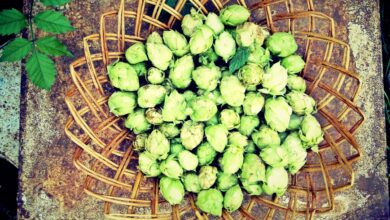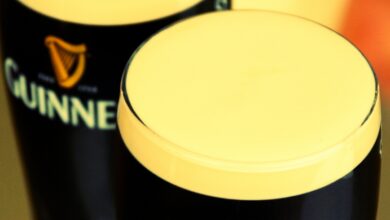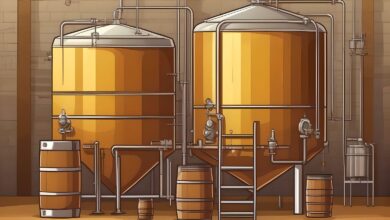What Is Malty Beer and How to Tell If Beer Is Malty

Aren’t all bears malty? That is a good question, considering all beers are made from malt (among other main beer ingredients). But before we can answer it, let’s first define what exactly is malt.
A Quick Introduction to the Malting Process
There is a common misconception that malt is just another word for grain. In fact, malt is a particular type of cereal grain after it undergoes a malting process.
Grain alcohol is the product of fermentation. Simply put, a yeast species (called Saccharomyces cerevisiae) eats carbohydrates from the grain and produces carbon dioxide (those bubbles that make beer foam) and alcohol. One problem, though: yeast can’t eat grain as it is, at least not efficiently. Grain contains too many starches and things not easily edible by yeasts. Hence, the malting process.

Statue of Saccharomyces cerevisiae (Hustopeče, Czech Republic)
Malting involves three principal steps: soaking the grain in water (steeping), germination, and drying (kilning). In other words, the grain is first put in water. Then, the water is removed, and barley is allowed to start sprouting. This enables the development of malt enzymes—chemical substances that break down hard-to-digest parts of barely like cell walls and the protein matrix. After that, the barley is dried—the excess water is removed, and the germination process is terminated. Skipping extra steps like root removal and cleaning, we get malt—a product suitable for yeast to eat and make alcohol.
The utilization of malted grains as a key ingredient in beer can be traced back to ancient civilizations, such as Egypt, with its Ancient Egyptian cuisine, and the cultures of Sumer and China.
What Does It Mean that a Beer Is “Malty”
Depending on the grain used and the specifics of the malting process, which we decided to skip in the previous section, you can get different kinds of malt that give beer different flavors. Sometimes, breweries combine different types of malt to produce a specific type of beer.
For example, wheat beer is made from wheat malt (often paired with barley malt for more efficient filtration). If the malt is roasted, it can give the resulting beer a chocolaty or coffee-like taste and a corresponding dark color. There are also so-called crystal malts. These are produced by subjecting the malt to very high temperatures and can give your beer a note of caramel or a biscuit flavor. Brewers often use crystal malts to balance the bitterness in pale ales and other hoppy beers.
As we can see, malt is a crucial part of the taste profile of any beer you can think of. But not all beers are called malty. When we describe beer as malty, we usually mean that the flavors that come from the malt are way more pronounced than the bitterness and acidic (citrus or pinecone-like) taste from hops.
Note that dark beers (porters, stouts, etc.) can also be bitter, but they have a very different kind of bitterness, similar to the one you find in coffee.
We have also heard the term “malty beer” employed to describe beers that taste sweet but do not contain any extra sweetener (say, fruit puree). While technically correct, the term “malty” should not be conflated with being just sweet. Different malts and brewing processes produce a whole spectrum of very different flavors that all can be considered “malty” as they originate from the malt.
Does Malt Beer Have Something to Do With It?
To make everything even less straightforward, there is also malt beer. Malt beer is a type of beer characterized by a low alcohol content (no more than 2.5 percent ABV, usually less) and sweet taste. It is brewed similarly to regular beer but with a reduced or minimal fermentation process. As we already know, minimal fermentation means that most sugars contained in the malt are not transformed into alcohol, hence both the sweet taste and low ethanol content.
This type of beer has been known since ancient Egypt and is sometimes given to breastfeeding mothers due to its perceived nutritiousness. This beer can be said to have a malty taste, but it is only one possible style of malty beer. In other words, all malt beer is malty, but most malty beers are decidedly not malt beer.




